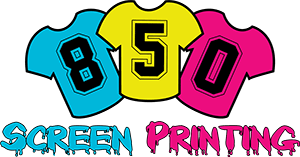Direct to Garment
What is direct to garment printing? It is just putting ink directly onto an item of clothing? What sets it apart from any other form of printing then?
Also referred to as DTG and inkjet-to-garment printing, Direct To Garment is the printing of digital images from a computer onto a shirt or other garment through the use of an inkjet printer. And while the name may seem vague, the advantages, disadvantages and ideal uses for DTG are quite specific. Read on to see how it works and whether your project is right for DTG.
Benefits of DTG:
- No setup costs
- Allows for small orders to be printed at a reasonable price
- Can print extremely detailed images
- Does not charge by the color, making full-color printing affordable
- Ink binds directly to fibers so it feels more like it’s part of the fabric
Printing Jobs DTG Is Used For:
- Low quantities
- Detailed designs with gradients, shading, or many colors
How it Works
DTG is less complicated that you’d expect given that it can capture complicated images so accurately on something as soft as a shirt or sweater. The best way to think of DTG is like at-home printing from your computer, except that the paper is replaced with a shirt. Like your at-home printer, DTG printers do not need to be set up for individual jobs and can render millions of colors. Some DTG printers are even manufactured by companies that make standard inkjet printers (like Anajet, Brother and Epson), but are simply modified to accommodate the additional bulk of garments and use inkjet textile inks, instead of what you buy for your printer at the store. These inks cost upward of $1000 per gallon, which is why printing on colored garments is so costly; an underbase of white ink has to be laid below the actual colors of your design to ensure that the colors look like you intended. All of this ink adds up!

